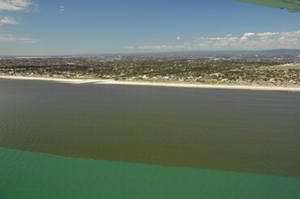The mystery of the missing sea nymph – solved!

A four-year study into the mysterious and rapid decline of Adelaide's coastal seagrass species – mainly Amphibolis (commonly known as 'sea nymph' or 'wire weed') and Posidonia – is close to completion.
The $4m Adelaide Coastal Waters Study, initiated by the State Government, was designed to address concerns about the decline in coastal water quality and the loss of more than 5000 hectares of shallow sub-tidal seagrass along the metropolitan coast since the mid-1930s.
The six research teams, involving some 60 scientists and technical staff from a number of research organisations, will meet today (Monday) to review their results – with the final report due to be delivered to the South Australian Government in July, 2006.
Study Director, Professor David Fox from CSIRO Land and Water says: “We have developed a big-picture view of Adelaide's coastal marine environment and can now start looking at how to prevent further degradation and hopefully even bring seagrass back.
“Seagrass meadows are primary producers at the bottom of the food chain and they provide natural habitat for many species of fish, crustaceans, and other marine animals.
“Taking the seagrasses out of the system causes a 'domino effect', where the sea floor becomes less stable and hence promotes a further loss of seagrass.”
The scientists have pieced together the complex story of seagrass loss, which begins with poor water quality (particularly elevated nutrients and suspended matter). Amphibolis plays a critical role in stabilising seagrass beds but has been lost from inshore waters, particularly during the mid-1970s.
“This was a period when urban development was occurring at its greatest rate, waste-water treatment plants were discharging higher loads of nutrients, and sewage sludge was being discharged offshore,” Professor Fox says.
As Amphibolis was lost, it is believed that natural erosion impacted on the other dominant species Poisidonia . According to Professor Fox the initial loss was from close to shore and this has progressed seaward – a reversal of the usual situation where the loss starts in deeper waters and moves landward.
The study also found that the government's water quality improvement plans of the past 10 years, coupled with reduced volumes discharged to the sea, have made a big difference. Most nutrient levels have been substantially reduced and the amount of some metals in the effluent discharged by wastewater treatment plants is only 10 per cent of what it was.
“However we must not be complacent,” Professor Fox says. “Our research has shown that although water quality is generally very much better than it was a decade ago, seagrass meadows have not, for the most part, recovered.
“The challenge now is how to preserve the relatively un-impacted coastal environment further south of Adelaide, in the face of increased pressure from urban sprawl, while trying to reverse the degradation that has already occurred.”
Source: CSIRO

















